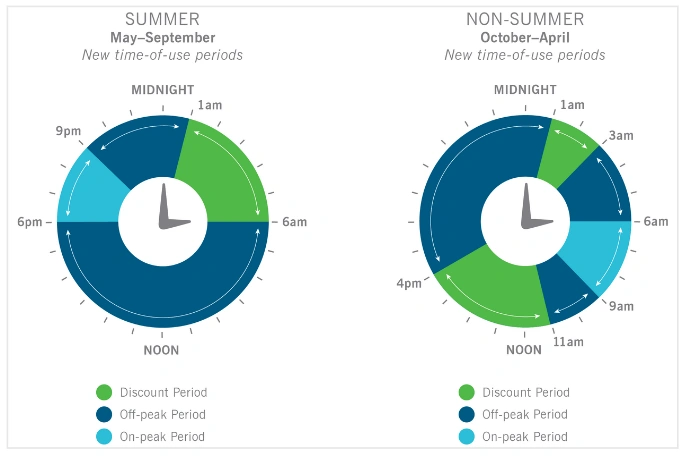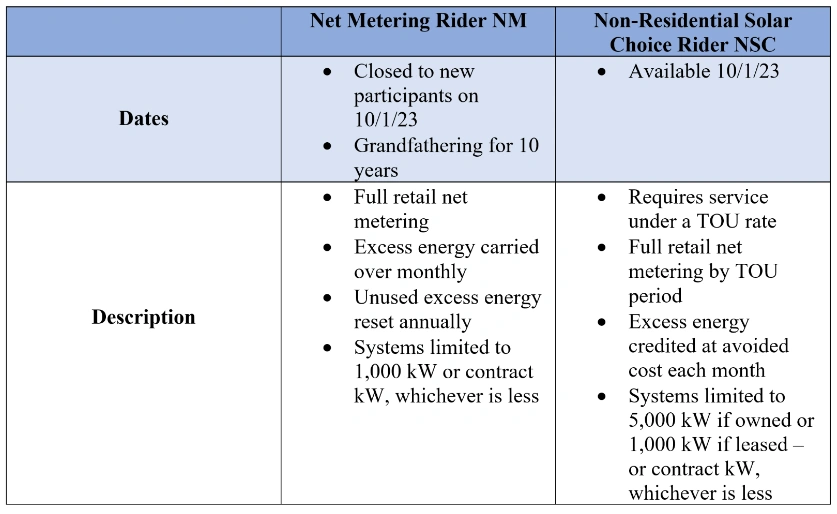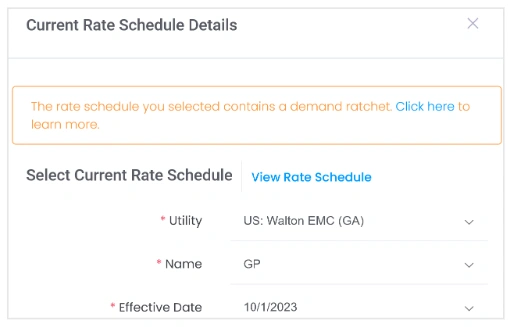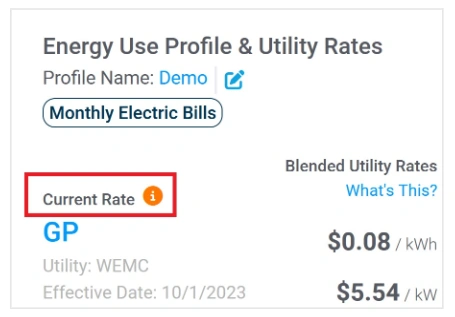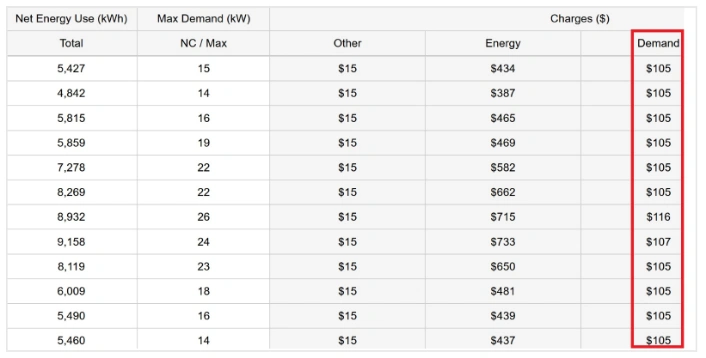October 2023 Utility Rates Newsletter
by Sarah Wood on Nov 01, 2023
solar newsletter
utility rates
utility rate updates
IMPORTANT MONTHLY UPDATES & ANNOUNCEMENTS
October is over, so we're doing a roundup of the most important utility and rate updates and announcements! This month, we cover the comprehensive multi-year rate case for Duke Energy Progress NC as well as explain what demand ratchets are, how they work, and new ETB Developer features that make ratchets more accessible.
Duke Energy Progress NC Rate Increases, New TOU Options, & NEM Changes
-
Multi-year rate plan with base rate increases of 3-4% each year for most rate classes.
-
New TOU options include a discount period that offers reduced rates of 30% less than off-peak hours.
-
Customers who submit interconnection requests starting in October will be placed on the two new net metering riders: the Net Metering Bridge rider or the Solar Choice rider.
A newly approved multi-year rate plan went into effect for Duke Energy Progress (DEP) NC customers this month. DEP’s last rate case was in 2019, and since then, it has invested nearly $6 billion into grid upgrades to improve resiliency and facilitate the shift to clean energy. This three-year plan includes significant rate increases, changes to TOU hours, and changes to net metering.
Residential-class customers will experience the most significant increase percentage-wise, as they are the primary source of revenue across all customer classes. The following table shows the approved base revenue increases for the major rate classes from October 2023 to October 2025:
The annualized bill impact for a typical residential customer who consumes 1,000 kWh per month will be 5.6%, 3.1%, and 3.3% for each year, respectively. General service customers can expect similar percentage increases as well.
In addition to these increases, DEP also implemented new TOU options to help customers shift their loads to more advantageous hours to minimize the impact of these rate increases. For residential and small general service customers, these changes include aligning all TOU periods across rate schedules for uniformity, reducing the number of On-peak hours, and adding a discount TOU period with rates 30% less than Off-peak rates:
Medium and large general service customers also have this new discount TOU period that offers lower rates than off-peak. These customers also now have overlapping TOU periods for demand charges. We highly recommend using interval data when working with rate schedules that have overlapping TOU periods in ETB. Lastly, rate schedules MGS-TOU and LGS-TOU now have a 100% max annual demand ratchet — we explain how demand ratchets work further down in the FAQ section of this newsletter.
This month also marked the cutoff date for residential and non-residential customers to submit interconnection requests for the old net metering rules inRider NM. Now, residential customers who submit interconnection requests can participate in either theNet Metering Bridge rider or theResidential Solar Choice rider. The Net Metering Bridge rider is available on a first-come, first-served basis with limited capacity that is updated annually, while the Residential Solar Choice is available to all customers. The primary difference between the two is that the Residential Solar Choice rider requires customers to take service with a TOU Critical Peak Pricing rate schedule, while the Bridge rider does not. Both riders no longer credit excess exported energy at the retail rate like Rider NM. Instead, excess exported energy is credited at a Net Excess Energy Credit (NEEC) found in each rider. Currently, both residential NEM riders have an NEEC of $0.034 per kWh. Non-residential customers who submit interconnection requests will enroll in theNon-Residential Solar Choice rider, which is similar to the residential version in that both customers receive a NEEC of $0.034 per kWh of excess energy exported back to the grid; however, non-residential customers are not subject to any grid access fees like residential customers are. The following table provides a comparison of the former NEM rider to the new Non-Residential Solar Choice rider:
October 2023 Utility Rates FAQ:
What Is a Demand Ratchet?
We recently introduced a few new features in the Energy Use Profile (EUP) and the Proposal to draw attention to demand ratchets (often referred to as billing demand configurations) if they are present in your selected rate schedule. Demand ratchets are not always immediately evident and can produce some unexpected results in the calculation of demand totals in your EUP. To help make demand ratchets more apparent, we added a text box in the EUP to inform you when there is a demand ratchet in your selected rate schedule:
In the Proposal, you will see an information bubble next to your current rate that also gives a similar message:
These new features provide information about how demand ratchets work. A recurring question we get from ETB users is about why sometimes the demand totals are the same for the entire year despite different measured usage every month:
In the example above, we can see that $105 is billed ten months out of the year for demand, even though the max demand is different every month. This is because of a 90% max annual demand ratchet present in the rate schedule:
This means that for each month, ETB will compare the max demand for that month to 90% of the max demand for the year (26 kW in this example) and calculate the demand total with the greater of the two. Since 90% of 26 kW (23.4 kW) is greater than the max demand for 10 of the months, ETB used 23.4 kW to calculate the demand totals, resulting in the same dollar amount for these months. This is how the utility in this example also calculates a customer’s demand each month — our ETB rate is simply replicating the billing demand configuration as dictated by the utility’s rate tariff.
For more information regarding demand ratchets, please see our Help Center located on the dashboard page of ETB Developer.
October Utility Roundup:
This past month, we added seventeen new utilities in several states and countries. This number serves as a good indicator of the number of growing solar opportunities and the number of times our data & services team has worked on requests from users. ETB is a user-driven platform, and almost every utility and rate we’ve created was requested at some point. If there is ever a utility or rate that you need that is not already in ETB, then please reach out to us at utilityraterequest@energytoolbase.com, and we’d be happy to add in whatever is needed!


